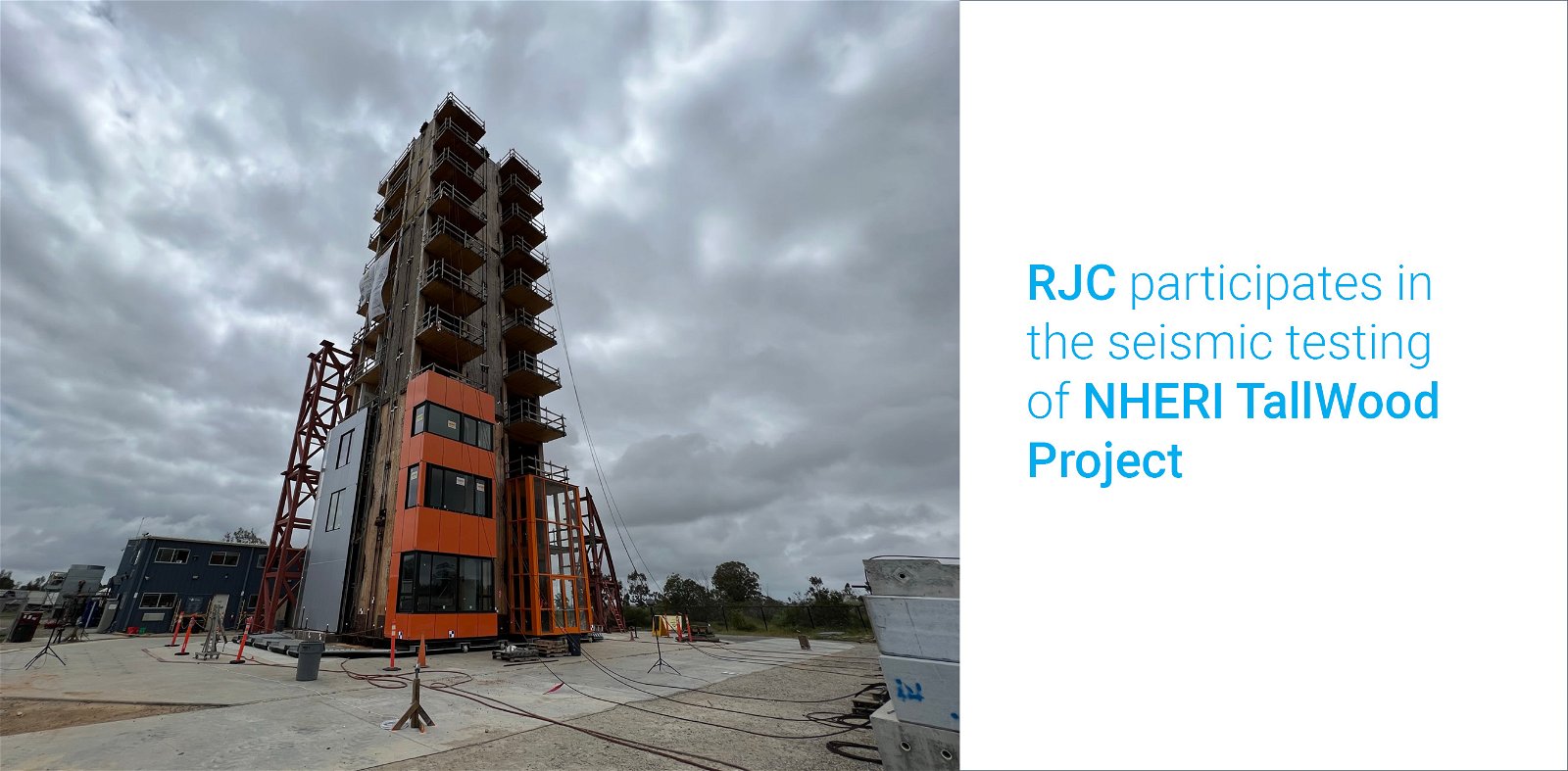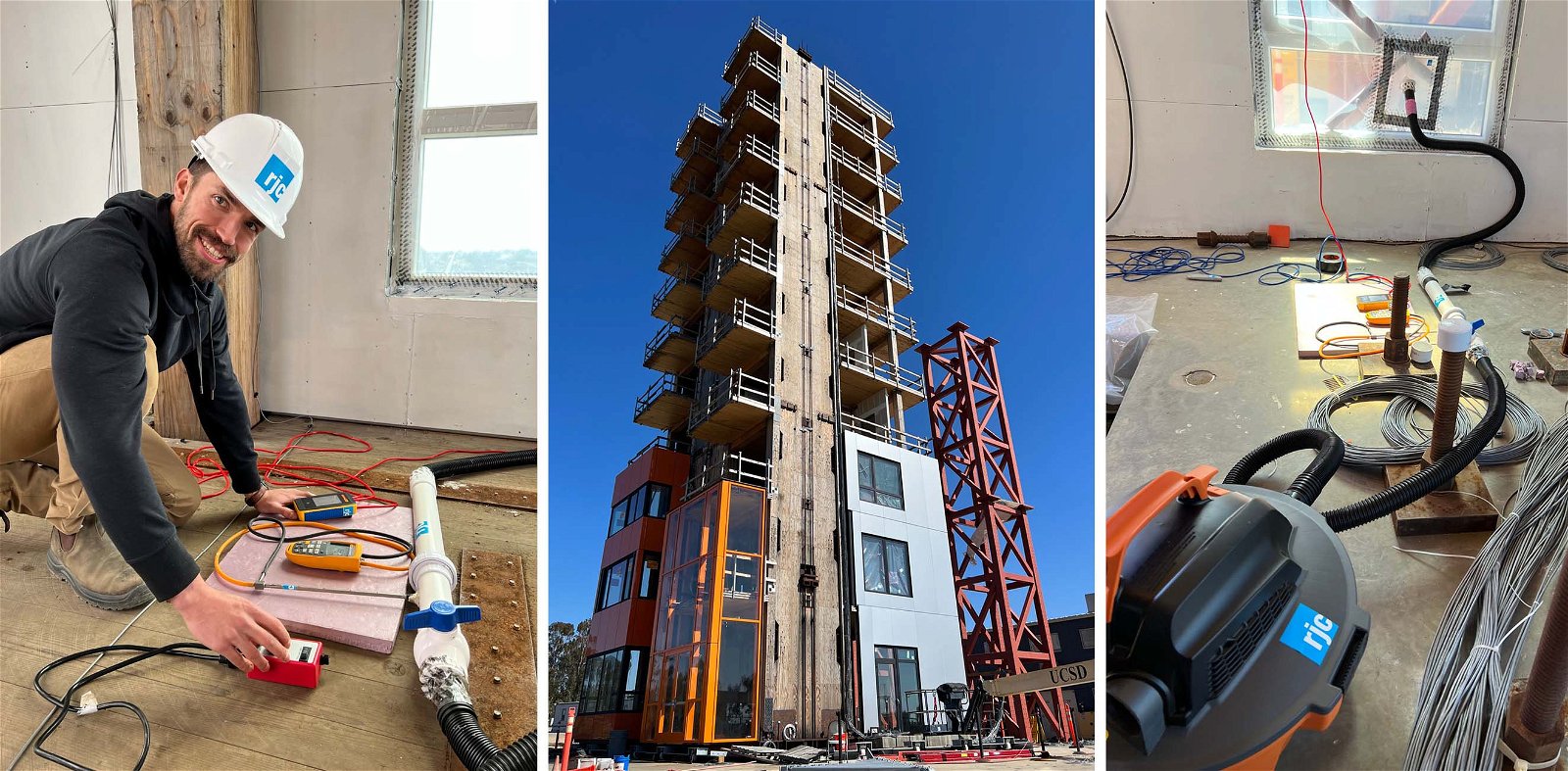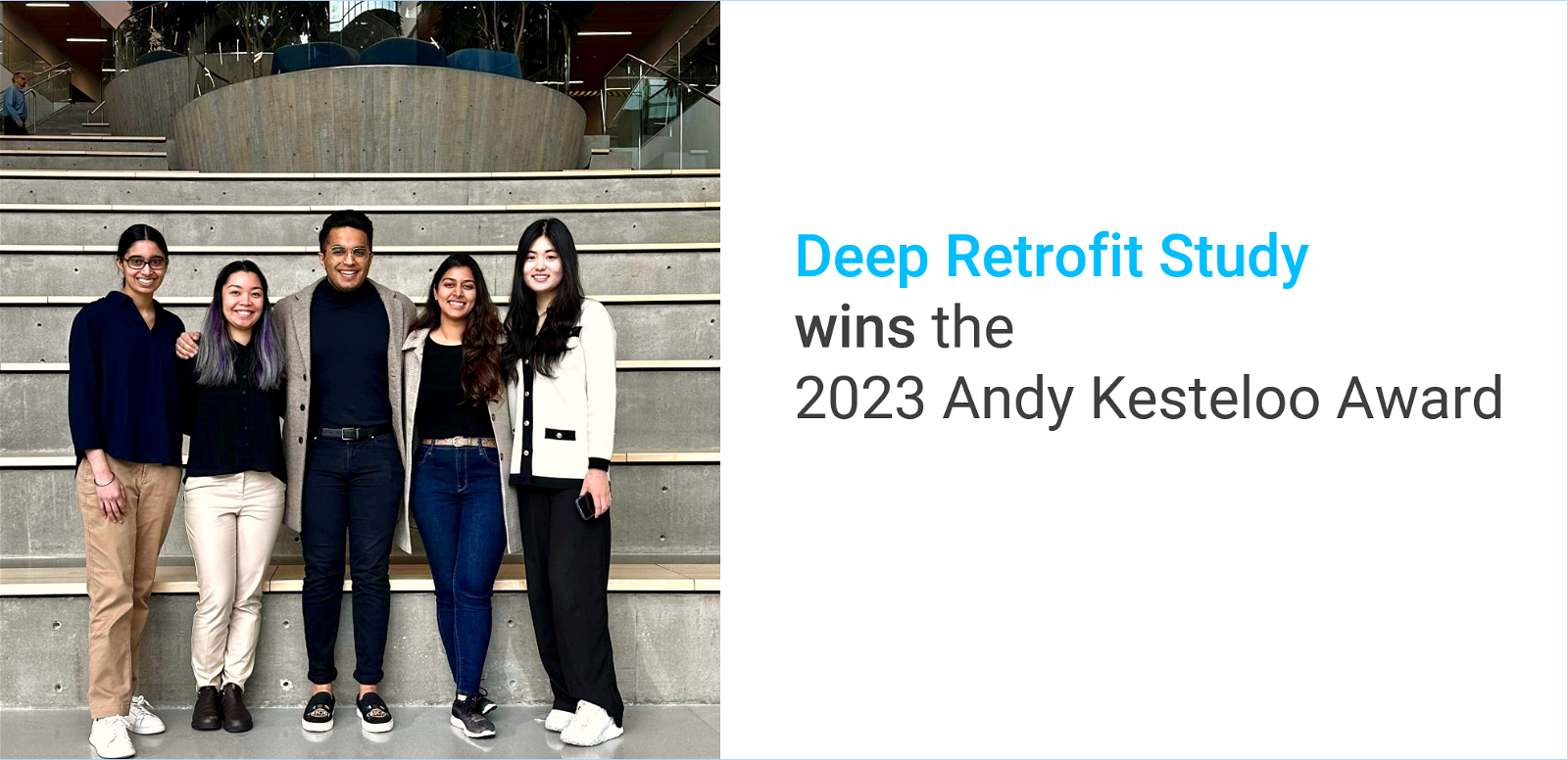RJC Engineers to Support First-of-its-Kind Seismic Testing of NHERI TallWood Project
- Details

The world’s tallest full-scale building ever tested on an earthquake simulator is expected to transform sustainable building design across Canada
RJC Engineers (RJC), a leading Canadian-based building structure and enclosure engineering firm, announced today its participation in the seismic testing of the Natural Hazards Engineering Research Infrastructure (NHERI) TallWood project, currently underway in San Diego, California. The NHERI TallWood project is a National Science Foundation-funded research effort that aims to investigate mass timber buildings' earthquake resilience by simulating large earthquakes on a 10-story mass timber building, the tallest ever tested on a shake table. The building includes 3-stories of enclosure systems to assess their interaction with the structure to develop and validate seismic design methodology, while also researching the impact on building enclosure. This first-of-its-kind initiative is expected to transform sustainable building design, and reduce the carbon impact of the construction industry in Canada.
RJC will be studying the impact of the earthquake testing, ranging in magnitude from 4 to 8, on the integrity of windows, a critical component to the overall energy efficiency and safety of a building. Insights gleaned from the testing are particularly crucial in British Columbia, where new code changes require developers to commit to greenhouse gas intensity targets, with Canada as a whole currently targeting harmonized implementation by the 2030 code cycle. Following a seismic event, even if unbroken, windows can sustain damage causing air to escape through the seals, leading to unseen breaches that are expensive to repair. State-of-the-art building energy performance schemes stop working as a result, driving up carbon emissions through fuel consumption and repair efforts.
"We are thrilled to be involved in testing the windows of the record-breaking NHERI TallWood project," says Dennis Gam, Principal, RJC Engineers. "As a company with extensive experience in building structure and envelope, we understand the importance of sustainable building solutions that can help reduce the carbon footprint of the built environment. The opportunity to observe testing of a potential future mass timber archetype and examine its influence on energy performance is a vital step forward in reducing the world’s carbon emissions.”

Further, Canada’s building sector is a significant contributor to Canada's greenhouse gas emissions, with residential, commercial, and institutional buildings accounting for 13% of the total emissions, and up to 18% when including electricity-related emissions. As of 2021, the building sector was recorded as Canada's third-highest carbon emitting economic sector Improving energy efficiency in the building sector is therefore essential to reducing Canada's overall carbon footprint.
"Building sustainably is not only a moral obligation, but a pressing need for Canada, as the building sector alone is a large contributor to the country's carbon emissions,” explains Terry Bergen, Managing Principal, RJC Engineers. Today’s test is a coordinated approach to making more energy-efficient buildings that are resilient to the impact of natural disasters like earthquakes.”
RJC’s participation in the NHERI TallWood project test is vital in furthering the understanding of the impact of seismic events on sustainable building design, in particular, in Canada. The research will inform the possible need to alter the architectural detailing of a building enclosure, to assure resilient performance through natural building movements from use and seismic events, and will help pave the way for a more sustainable and resilient future that meets B.C. Energy Efficiency and Zero Carbon Step Code targets.
Building testing is currently taking place at The University of California, San Diego. To learn more about RJC Engineers and their involvement with the NHERI TallWood project, visit https://www.rjc.ca/ and http://nheritallwood.mines.edu/index.html.








